
The Episcopal Church in Delaware, formerly known as the Episcopal Diocese of Delaware, is one of 108 dioceses making up the Episcopal Church in the United States of America. It consists of 33 congregations or parishes in an area the same as the State of Delaware. The diocese is led by a bishop and staff and provides episcopal supervision and some administrative assistance for its parishes.

The Episcopal Diocese of Atlanta is the diocese of the Episcopal Church in the United States of America, with jurisdiction over middle and north Georgia. It is in Province IV of the Episcopal Church and its cathedral, the Cathedral of St. Philip, is in Atlanta, as are the diocesan offices.
Henry Nutt Parsley, Jr. is an American prelate of the Episcopal Church and the retired tenth Bishop of Alabama, and the former Provisional Bishop of the Diocese of Easton. Parsley is also a former Chancellor of the University of the South in Sewanee, Tennessee. He now resides in Wilmington, North Carolina and attends St. James Parish in Wilmington.
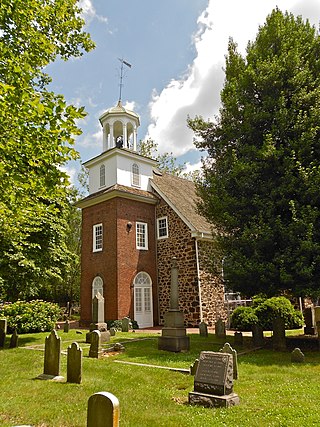
Holy Trinity Church, also known as Old Swedes, is a historic church at East 7th and Church Street in Wilmington, Delaware. It was consecrated on Trinity Sunday, June 4, 1699, by a predominantly Swedish congregation formerly of the colony of New Sweden. The church is among the few surviving public buildings that reflect the Swedish colonial effort. It remains open for tours and religious activities. The church was designated a National Historic Landmark in 1961 and became part of First State National Historical Park in 2013.

The Episcopal Diocese of Upper South Carolina (EDUSC) is a diocese in the Episcopal Church.

Airlie Gardens is a 67-acre (27 ha) public garden in Wilmington, North Carolina.

Christ Church is an Episcopal church in the Old City neighborhood of Philadelphia, Pennsylvania, United States. Founded in 1695 as a parish of the Church of England, it played an integral role in the founding of the Protestant Episcopal Church in the United States. In 1785, its rector, William White, became the first Presiding Bishop of the Episcopal Church.
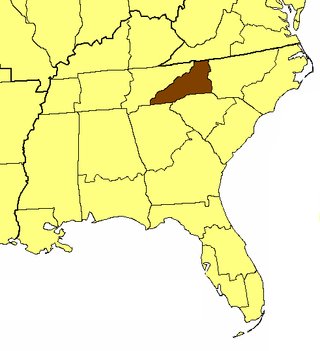
The Episcopal Diocese of Western North Carolina is a diocese in the Episcopal Church. It consists of 28 counties in western North Carolina and its episcopal see is in Asheville, North Carolina, seated at the Cathedral of All Souls. The first recorded worship from the Book of Common Prayer west of the Catawba River was in 1786. Valle Crucis, where one of the two conference centers is located, began as a missionary outpost in 1842. In 1894, a resolution was adopted in the Convention of the Diocese of North Carolina that the Western part of the state be set aside and offered to the General Church as a Missionary District. The following year, in November 1895, the first Convention of the District of Asheville was held at Trinity Church in Asheville. In 1922, after all the requirements had been fulfilled, a petition from the Jurisdiction of Asheville to become the Diocese of Western North Carolina was presented at the General Convention of The Episcopal Church. It was accepted on September 12, 1922.

Christ Episcopal Church, also known as Christ Church on Capitol Square, is an Episcopal church at 120 East Edenton Street in Raleigh, North Carolina. Built in 1848–53 to a design by Richard Upjohn, it is one of the first Gothic Revival churches in the American South. The church was built for a parish established in 1821; its minister is the Rev. James P. Adams. It was declared a National Historic Landmark in 1987.

St. Paul's Protestant Episcopal Church, more commonly called Old St. Paul's Church today, is a historic Episcopal church located at 233 North Charles Street at the southeast corner with East Saratoga Street, in Baltimore, Maryland, near "Cathedral Hill" on the northern edge of the downtown central business district to the south and the Mount Vernon-Belevedere cultural/historic neighborhood to the north. It was founded in 1692 as the parish church for the "Patapsco Parish", one of the "original 30 parishes" of the old Church of England in colonial Maryland.
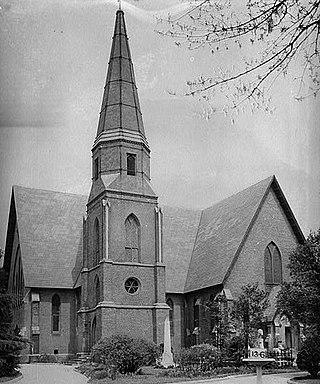
Christ Church (Episcopal) is an Episcopal church in Greenville, South Carolina, United States. which was consecrated in 1854. The church and its courtyard are listed on the National Register of Historic Places as Christ Church (Episcopal) and Churchyard. It is the oldest organized religious body and the oldest church building remaining in Greenville.

St. Luke’s Episcopal Church is a historic Carpenter Gothic–style Episcopal church building located at 219 Chunns Cove Road, in the Chunn's Cove neighborhood of Asheville, North Carolina. Built in 1894, at a cost of $728, St. Luke’s was designed by E. J. Armstrong, a member of the congregation. Its first service was held September 17, 1894.

The Church of the Good Shepherd is a historic Episcopal church in downtown Raleigh, North Carolina. The congregation branched off of Christ Episcopal Church in 1874, making it the second oldest Episcopal parish in Raleigh. It is part of the Episcopal Diocese of North Carolina and served as the Pro-cathedral church of the diocese in the mid-1890s.

Adam Empie was an Episcopal priest in North Carolina and Virginia, who also taught and served as President of the College of William and Mary.
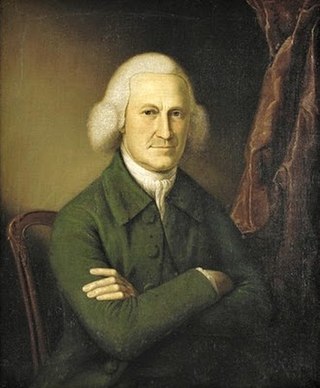
James Claypoole, Sr. was an American portrait painter, house painter, and glazier. He was born in Philadelphia, Pennsylvania, the son of Joseph Claypoole (1677-1740/41) and his second wife Edith Ward Claypoole. He died in Philadelphia.
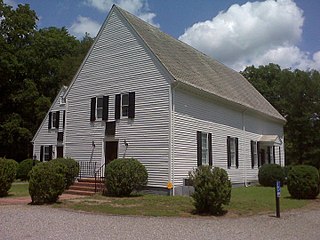
Slash Church, also known as the Upper Church-St. Paul's Parish is a historic Disciples of Christ Church, formerly an Anglican/Episcopal church located at 11353 Mt. Hermon Road, Ashland, Hanover County, Virginia. Built of southern yellow pine cut from the property in 1729–30, it is the oldest frame house of worship still in use in Virginia.
Thomas Campbell Darst was the third Bishop of the Episcopal Diocese of East Carolina from 1915 to 1945.

Carolina Heights Historic District is a national historic district located at Wilmington, New Hanover County, North Carolina. The district encompasses 421 contributing buildings, 1 contributing site, and 1 contributing object in a predominantly residential section of Wilmington. The district developed as planned suburban areas between about 1908 and 1950 and includes notable examples of Queen Anne, Classical Revival, Colonial Revival, and Bungalow / American Craftsman style architecture. Notable buildings include the New Hanover High School (1922), the Trinity Methodist Episcopal Church (1921), St. Paul's Episcopal Church (1927/1956-1958), First Church of Christ, Scientist (1928), Sinclair Service Station, and Yopp Funeral Home (1936).

The Wilmington Historic District is a national historic district located at Wilmington, New Hanover County, North Carolina. The district encompasses 875 contributing buildings 38 contributing sites, and 3 contributing structures in the historic core and surrounding residential sections of Wilmington. The district developed after Wilmington was laid out in 1737, and includes notable examples of Queen Anne and Bungalow/American Craftsman style architecture. Located in the district are the separately listed City Hall/Thalian Hall and Alton Lennon Federal Building and Courthouse. Other notable buildings include:


















